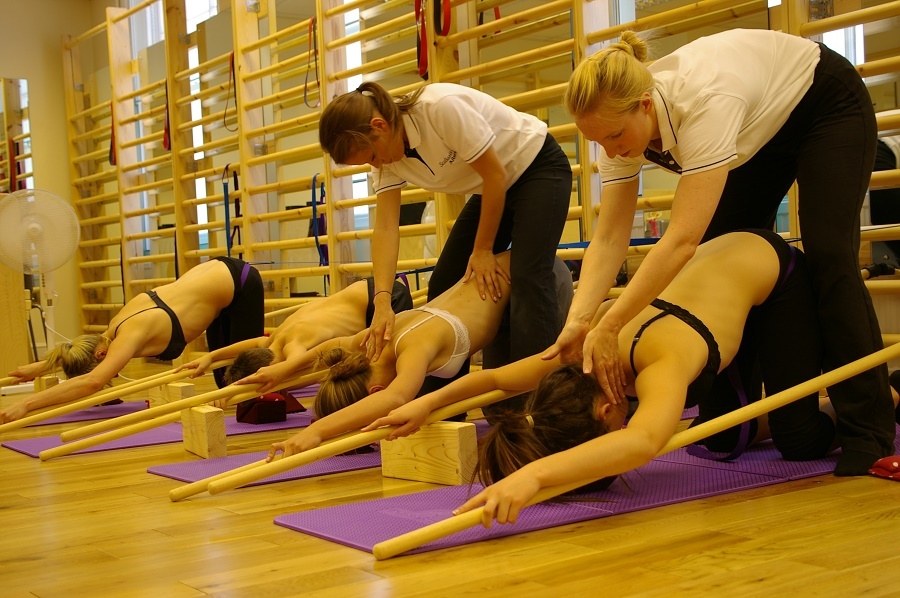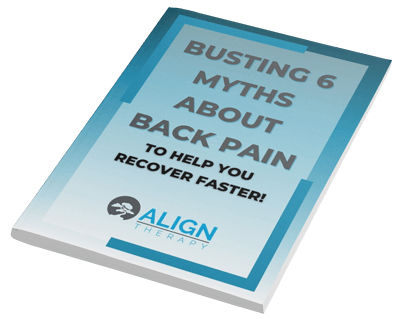Recently, when I saw a scoliosis patient in the clinic for a follow up after 3 months of them doing their Schroth and PSSE (Physiotherapeutic Scoliosis Specific Exercises) at home, I was struck by how challenging these exercises are. Not how challenging they are to learn, although that is a challenge as well, but how challenging they are to be consistent with long term.

You see, this patient was diagnosed at age 11 when she had a 18 degree scoliosis curve. Her doctor followed the normal “wait and see” approach that is common in our medical system, and she progressed to a 26 degree scoliosis over that first year. Now that her scoliosis was over 25 degrees, she received a brace to help reduce progression further. She also finally heard about my clinic from a friend, and started Schroth Method exercises about 1 year after her diagnosis.
So, when I saw her for the first time, she was 12 and I tried to get an idea of what potential for growth she had. Her mom was 5 foot 11, and her dad was 6 foot 3. She was definitely pre-puberty, and she had a lot of growth potential since she was only 4 foot 11. Her mom wasn’t done growing until she was 16 or 17 years old.
One of the big challenges in this case is that this patient most likely has at least 4 years of growth left. That is 4 years of being braced and 4 years of doing the Schroth Method until she is done growing and can wean off of the brace and exercises. That is a long time!
Normally, we recommend doing Schroth scoliosis exercises 5 days per week for 20-30 minutes each day. That is the best case scenario, and the purpose is to keep the curve in check and build muscle memory and strength to oppose the curve. This is the ideal situation and, if done correctly, provides great results, especially when combined with bracing.
The problem? That is a really long time to stay motivated and consistent with exercises. It is also during a really challenging time in life where things are changing emotionally, physically, mentally, and hormonal. There are so many variables and so many things that can disrupt treatment.
Now, some of my scoliosis and kyphosis patients have an internal drive and self motivation that they just do their exercises consistently for years without much complaint and without too much disruption. But that isn’t the norm when it comes to patients who have years of growth left.
Many are like the scoliosis patient I referenced at the beginning of this post. They begin to lose the initial fire which helped them to learn their exercises and be consistent in the beginning. Life starts to get in the way, and exercises are monotonous and become boring. They struggle to stay motivated to do their exercises, especially when thinking about doing them for 3 more years.
I totally get it! I would have been the same way in my teenage years with the diagnosis of scoliosis or kyphosis. Bracing is hard, and being consistent with exercises is hard…but that is the best thing to stop a scoliosis or kyphosis curve that is progressing. So, what do we do?!!
I don’t have the magic answer to this, but I do have 4 tips that help to get the most out of Schroth exercises and other PSSE exercises. Hopefully they help! One of my goals this year is to figure out the best way to address this problem to help my patients get the best results possible for their scoliosis and kyphosis curves.
This doesn’t just apply to adolescents or younger kids dealing with scoliosis or kyphosis! Adults with spinal curves can use the same techniques and suggestions because they have an even longer time that they will be doing the exercises if their curve is degenerative.
Here are the 4 tips:
1. Get the right equipment!
One of the biggest challenges I see with my newer patients in the clinic to doing their exercises consistently at home is having the right equipment. It is not uncommon for me to ask if they did their exercises, and when they say they haven’t, the reason is that they don’t have what they need at home.
This is a relatively easy problem to fix. Get the equipment and supplies that you need!
Now, you might be thinking the exercise equipment is expensive and that is a large barrier to being able to do these. While the equipment can be expensive if you want to go with the highest quality and best stuff, it can be very inexpensive if you get creative.
One of the hallmark items for Schroth exercises is a stall bar. Yes, these can be expensive, and they do take up a bit of room. For those who want a less expensive option, we have developed a way to do hanging exercises with minimal equipment. Here is a YouTube video on how that works.
You can also visit our Align Store, where you can see the equipment we recommend and purchase those on Amazon for your convenience.
My suggestion with equipment is to get the best equipment you can afford, so you don’t run into the problem of not wanting to do exercises because of difficulty in setup or not having the right things. The investment in your own spine is worth it!
2. Build a consistent routine!
This is something that helps with ALL exercise programs, as well as anything you want to be consistent with. Develop a routine that includes doing the exercises. This will help you do them on a regular basis, and this will get the results you are looking for.
Sounds easy, right? Well it really isn’t….at first!
Even though everyone is different with their routines, schedules, and life, there are still some principles that can help you build a routine.
First, make sure it is at the same time of day and on specific days. Try to be as specific as possible and make sure there isn’t something that will interfere consistently with it. Instead of saying “I will do my exercises before bed” say something like “I will do my exercises on Monday, Wednesday, and Friday from 9 to 9:30. The more specific the better.
Then, put a reminder in your phone and block out your schedule. Devices are such a distraction these days, but we can utilize them for good by having them help us remember what we are supposed to do and what we are committed to.
Tell others in your family, or those around you, what you are trying to do, and ask for their help in being consistent. This is really helpful if you can get those around you to help you remember and be accountable for doing what you want to be doing. If you are a parent of a child who needs to do this, however, be careful how much you “nag” them about it. There is a fine line, and you want to make sure you are on their team, and not their task master.
Then, JUST DO IT! Yes, the Nike slogan is a big part of it. The best way to build of habit of consistently doing these is to do it. Studies are all over the place with this, but it takes consistently doing something for anywhere from 14 days to 2 months to build a habit, so be consistent and put in the work up front. It will pay off when you have built that habit.
Then….keep doing it! Keep that habit going.
3. Connect with others dealing with their own curves!
Talking to a doctor, surgeon, physical therapist, etc about your scoliosis can be helpful and can give some insights, but talking to someone who is going through, or has gone through, something similar to you, is priceless!
I fully admit that I don’t know what it is like to be brace or facing progression to surgery. I really don’t know what it is like to do Schroth exercises consistently for scoliosis or kyphosis over years of time. But I know many people who do know what it is like!
In our day of social media, we have a very significant opportunity to connect with others who are dealing with similar things to us. There are Facebook Groups you can join, Instagram people you can follow, and even specific online groups you can connect with to find someone dealing with what you have going on and get support.
I did a podcast episode with Megan Glahn, who is an orthotist and founder of Scolios-us, an organization helping kids who are braced connect with each other. Here is the episode if you want to listen to it.
Megan found that connecting her patients with someone who can help support them through the process of bracing helped them get better outcomes. Check out her mentor program at https://www.bracingforscoliosus.org/.
If you are one of my patients, we consistently look at helping our clients connect with others. I love helping those dealing with scoliosis and kyphosis find someone who they can talk to and get support from. Talking to someone who truly understands is priceless and can help when things get hard. Just make sure they are supporting you to do the best things for your spine!
4. Learn the exercises well, and be specific!
It might not seem on the surface that learning the exercises really well would help you to be consistent in the long term, but it definitely has a large impact. Let me explain why.
A couple of years ago, there was a research article that looked at the effectiveness of Schroth Method exercises for adults with scoliosis. It found that the more consistent the person was with Schroth exercises, the better the result with their curve. (Now, that shouldn’t be news to anyone reading this post).
They then found that the most telling factor of if they were consistent with their exercises was if they felt like they understood them and could do them well. That seems to be a key!
Here is a YouTube video where I explain that study.
If you don’t feel like you are doing the exercises correctly, then why would you do them consistently? The thought that you might be doing them wrong interferes with your motivation to do them.
So, the antidote for that? Learn the exercises really well, make sure you are paying attention and asking questions, and really try to understand them.
This doesn’t mean you have to know the names of the muscles or what nerve innervates them, or go to an anatomy lab. It means you really try to understand what the exercises are doing and ask questions if you are unclear. It also helps to try and feel what is happening in your own body when you are doing the exercises. Connecting your brain to your body really helps with the learning process and improve the effectiveness of the exercises.
I feel like the more questions you ask, the clearer you are on what is going on, and the more knowledge you gain about your back, the better. After all…it is YOUR back! You will be living with it for the rest of your life. The better you understand it now, and what helps it, the better the outcome in the long term.
So, there you have the 4 tips I use with my patients to get the best results from their Schroth Method exercises. I am not going to say they are easy to implement, but they are effective. Take them one at a time and I would love to hear your success stories, as well as your struggles.
This year, one of my main goals is to see if I can figure out how to address the issue of consistency better. It has been a challenge since I started practicing scoliosis treatment and I think many other patients and providers struggle with the same thing.
The things I am really looking at exploring are:
Can we Gamify scoliosis exercises to make them more fun to do?
Can we provide better support from the clinic side to improve performance at home?
Can we do better group classes where kids and adults can interact with others dealing with their same problem?
Do we need to do exercises as frequently to get the same results?
All these are questions I have been thinking about and I will provide more information on in the future as we explore them. Stay tuned as we work through this challenge of consistency and improve our outcomes with scoliosis and kyphosis treatment.
Thanks for reading!
David Butler, Physical Therapist



